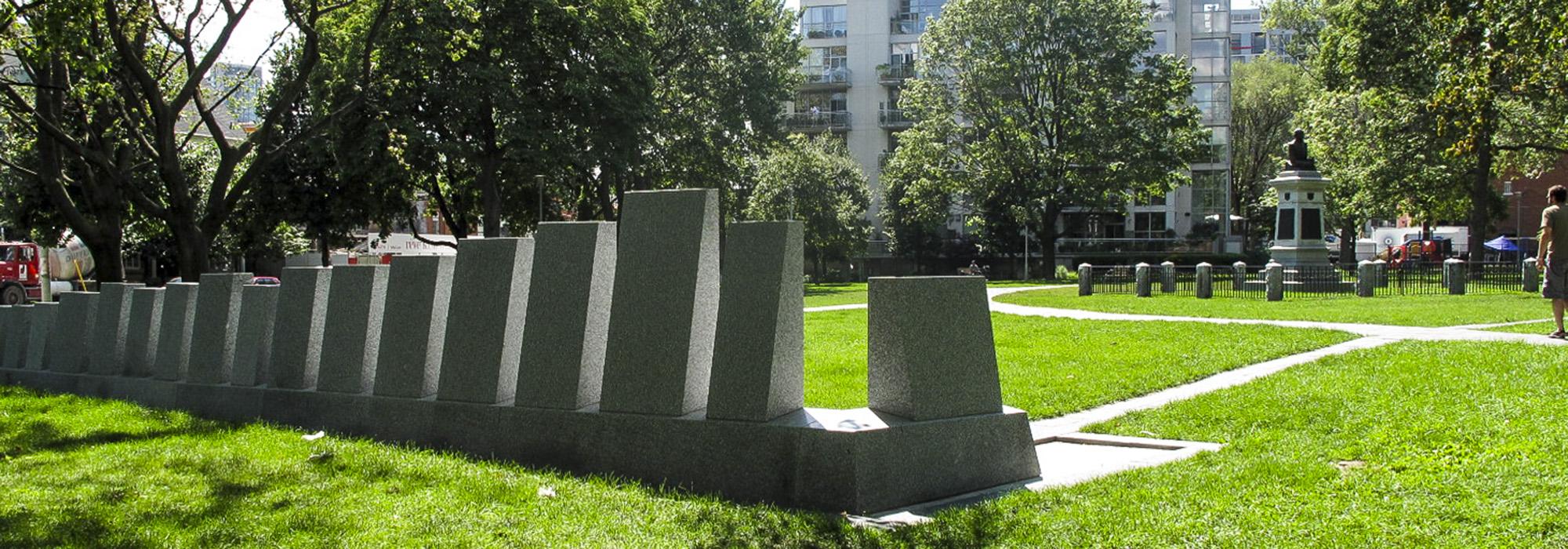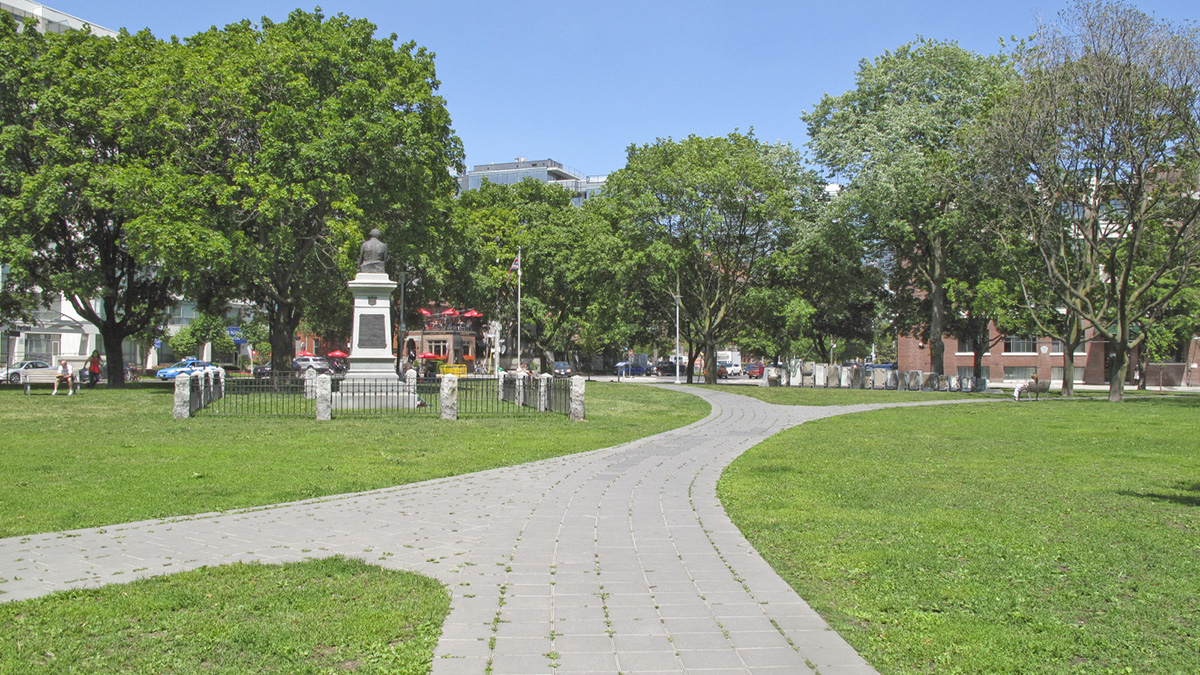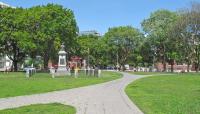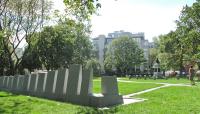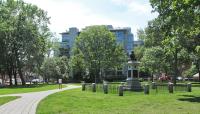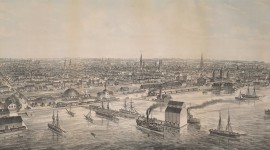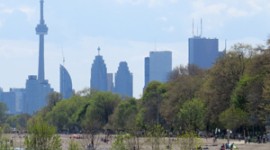Landscape Information
This 0.81-hectare park contains a rectangular burial ground (38 by 91 meters) active from 1794 to 1863 established by Lieutenant-Governor John Graves Simcoe for the garrison at nearby Fort York. Simcoe’s infant daughter Katherine was the first interment. In 1837 an encroaching street grid enclosed the cemetery within a 2.4-hectare parcel thereupon named Victoria Square, which was connected to Clarence Square to the east by a wide, tree-lined boulevard known as Wellington Place. Much reduced in size, the square was converted to a park in the 1880s, its gravesites leveled, paths established, and the surviving headstones gathered along its western edge. Having fallen into neglect, in the late 2000s the park was significantly altered, with a fenced playground added at its northwest corner.
Two arcing pathways originating at the park’s corners cross the length of the flat, grassy parcel and converge at the middle, while a narrow cobblestone walk outlines the historic cemetery. The seventeen surviving headstones are attached to a file of upright granite slabs along the northeastern edge of the burial ground. At the center of the park, enclosed by a wrought-iron fence anchored by bollards, the War of 1812 Monument comprises a stone pedestal by architect Frank Darling, surmounted by a bronze sculpture completed in 1907 by Walter Allward. Elsewhere two stone chairs, designed by Montse Periel and Màrius Quintana, memorialize a letter of support for the park from author and activist Jane Jacobs, written in 2002. The park, redesigned in 2012 by ERA Architects and The Planning Partnership, is a component of the Fort York National Historic Site, so designated in 2003.



